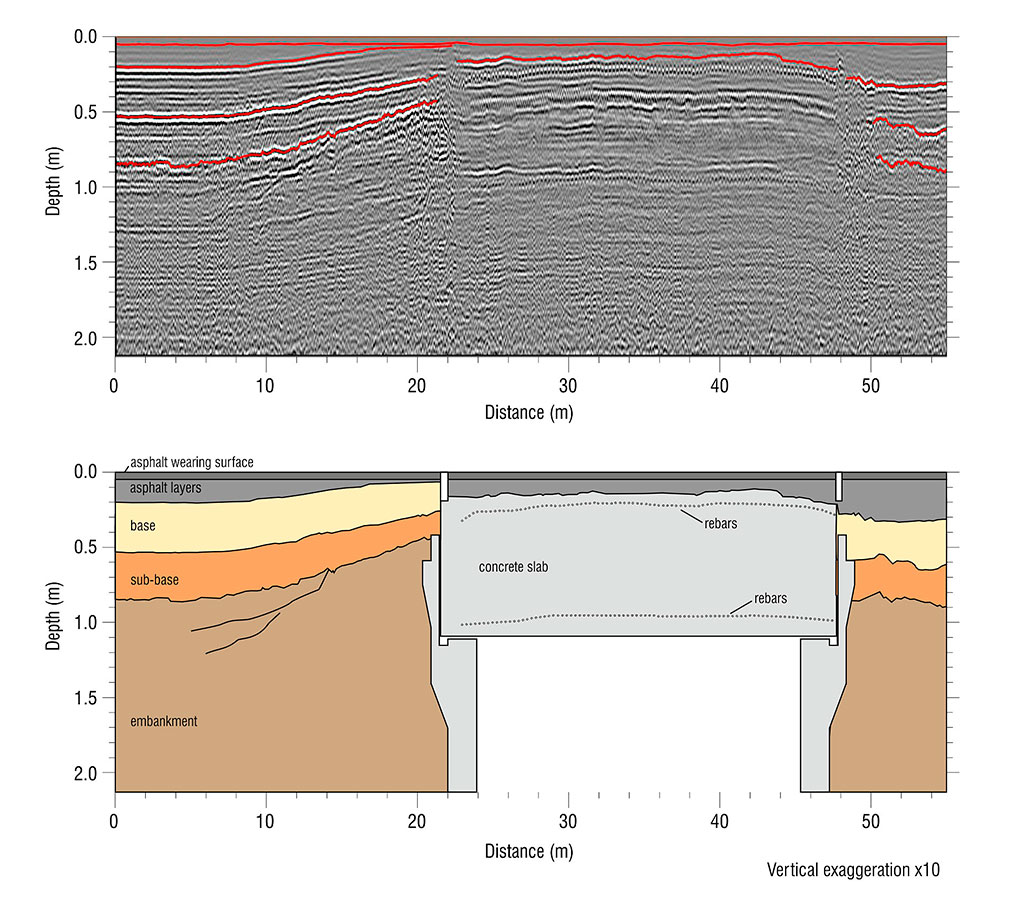Asphalt thickness measured on a bridge deck. Detailed cross-sections can be extracted due to the high-density coverage obtained with a 3D GPR antenna
Top: radargram obtained on a bridge deck survey. Bottom: Structural interpretation of the radargram
Rebar concrete cover distribution on a bridge deck. Middle: total depth of the rebars. Bottom: calculated concrete cover thickness (total rebar depth minus asphalt thickness)
Civil Engineering applications
Bridge decks can suffer from various defects, such as cracks, spalling, scaling, honeycomb, voids, delamination, insufficient cover, corrosion of rebar, etc. Corrosion of rebar is one of the dominant damage types in terms of overall bridge maintenance costs. One major cause of rebar corrosion is due to the use of deicing salts, where the ingress of chloride ions causes corrosion, which causes cracking and then a positive feedback situation where the cracking enables more chloride intrusion. This effect can be critical in cold regions where deicing salt is widely applied throughout the long winter season.
Conventional techniques for bridge deck condition assessment, including core sampling, corrosion (half-cell) potentials, and chloride ion measurements are slow, labor intensive, intrusive to traffic, and do not produce an accurate estimate of the quantity of deteriorated concrete.
GPR deck surveys are conducted at road speed using air-coupled 3D arrays. Each array is composed by 29 sensors spanning 2,1 meters across. The combination of collected data produce longitudinal, traverse and map sections of the bridge deck showing the presence of rebars and the size and shape of any potential delamination or deteriorated areas.
Data density is so high that it is straightforward to construct interfaces of pavement layers and rebar depth.
Everest Geophysics employs multifrequency 3D arrays in bridge scanning surveys that offer unparalleled results:
- Pavement layer identification
- Rebar depth
- Existence and dimensions of anomalous areas
- Transition slabs
- Subsidences
- Anchors



